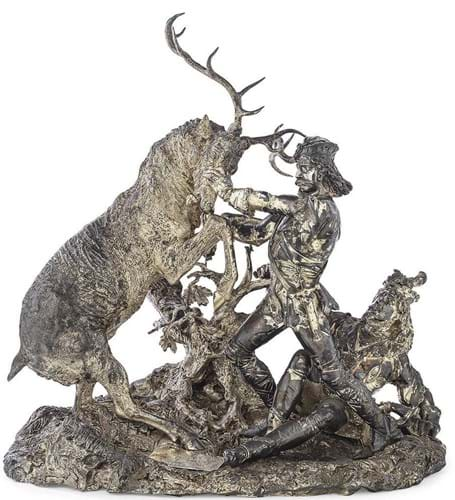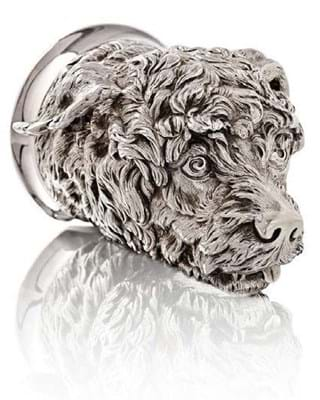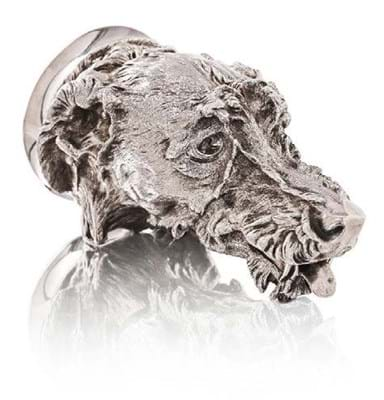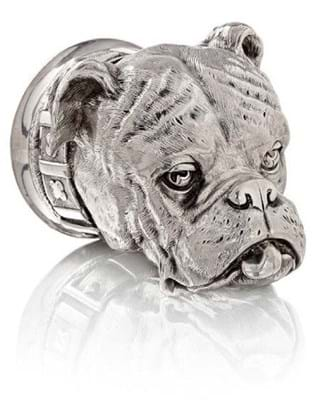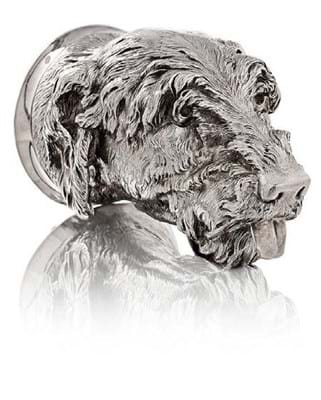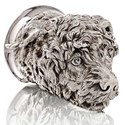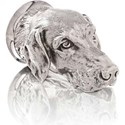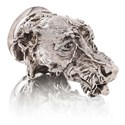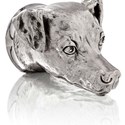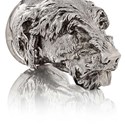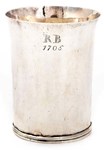Such items made up a high proportion of the lots and provided a number of the top prices.
Among them, and making far more than the £2000-3000 predicted at £19,000, was a monumental silver-plated racing trophy from 1893 measuring almost 2ft (60cm) in height and length.
The unmarked work, accompanied by a lengthy catalogue entry, took the form of a dramatic scene thought possibly to be based on Benjamin West’s 1786 painting The Death of the Stag.
The trophy had an inscribed silver plaque to the front detailing that it was won by Mr Tom Worton by his racehorse Victor Wild on October 5, 1893, at the Hurst Park racing club. It had passed down by descent to the vendor.
West’s famous painting depicted a scene from the legend in which Colin Fitzgerald, the first chieftan of the Clan Mackenzie, saves the life of the Scottish King Alexander III by spearing a stag that had turned on him during a hunting expedition.
Commissioned from the artist by Francis Humberston Mackenzie, chieftain of the Mackenzie Clan, to commemorate his ancestor, it is the largest painting in the National Galleries Scotland’s collection and would have been well known in Victorian Britain.
This Hurst Park Club Cup racing trophy, with prize money of £1000, was won in 1893 by the three-year-old Victor Wild.
Worton was not a member of the ruling classes, but a publican of a popular drinking establishment in Walthamstow and both horse and owner were popular winners with the public as they bucked convention.
This trophy was won at an early stage in Victor Wild’s career. The horse went on to win six events that year and achieved many subsequent successes including the Royal Hunt Cup at Ascot in 1894.
Hurst Park, a racecourse at Moulsey Hurst, West Molesey, Surrey, near the Thames and Hampton village, was also in its early period when Victor Wild won the cup, having been open for just three years. Previous years had featured racing at nearby Hampton Court Racecourse, but this track was forced to close in 1887 and a group of local businessmen formed the Hurst Park Club Syndicate Limited in 1889 as a replacement.
Hurst Park was an oval course of 11 furlongs in total and by the turn of the century was hosting top-class racing. Racing was halted only in exceptional circumstances such as during the two world wars and on June 8, 1913, when the grandstand was the scene of an arson attack by Suffragettes Kitty Marion and Clara Elizabeth Giveen, as a revenge attack following the death of Emily Davison at the Epsom Derby four days earlier.
The course closed in 1962 when the land was sold for residential housing.
Realistic modelling
Animal models featured among the silverware in the library sale in various forms. Among them were six late Victorian silver canine stirrup cups, realistically modelled as various different dog breeds by Thomas Alfred Slater, Walter Brindsley Slater and Henry Arthur Holland of the London firm Holland, Aldwinckle and Slater.
Five of them were hallmarked for 1896. One, the most expensive, for 1899. In Bonhams’ Connoisseur’s Library sale they were offered individually each with an estimate of £3000-5000 and sold for prices ranging from £4500-5500.
A good example of the popular animal claret jug came in the form of a 12in (30cm) high silver-mounted glass example modelled as an eagle with realistically chased feathers marked for Sampson Mordan, London 1881. Against a £12,000- 18,000 guide it sold on the low estimate.
Among the top-priced hollowares on offer at Bonhams were a pair of 288oz, 13in (33cm) high George IV period wine coolers of campana shape by John Edward Terrey, London 1827. They were cast to the bodies with a frieze of chariots, a drunken Silenus and classical figures.
Estimated at £18,000-22,000, these sold for £17,000.


